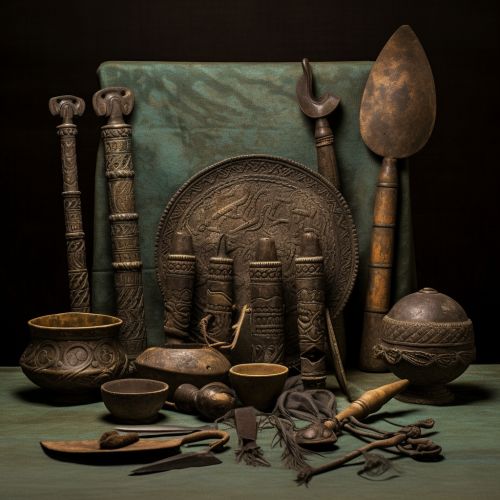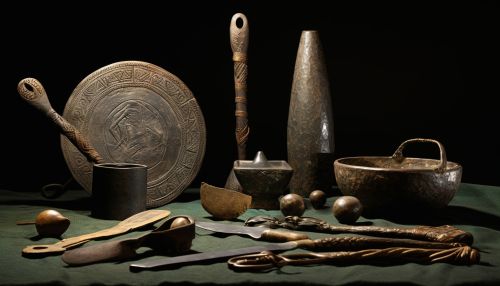Bronze Age
Overview
The Bronze Age is a historical period characterized by the use of bronze, early writing systems, and other early features of urban civilization. The Bronze Age is the second principal period of the three-age Stone-Bronze-Iron system, as proposed in modern times by Christian Jürgensen Thomsen, for classifying and studying ancient societies.


Chronology
An ancient civilization is defined to be in the Bronze Age either by producing bronze by smelting its own copper and alloying with tin, arsenic, or other metals, or by trading for bronze from production areas elsewhere. Bronze itself is harder and more durable than other metals available at the time, allowing Bronze Age civilizations to gain a technological advantage.
Bronze Age by region
The timing of the Bronze Age varies significantly among cultures and regions. In the Near East, the Bronze Age begins with the rise of Sumer in the 4th millennium BC. In the Indus Valley Civilization, the Bronze Age begins in the 3rd millennium BC and lasts until the end of the 1st millennium BC. In Western Europe, the Bronze Age begins in the late 3rd millennium BC, slightly later in Northern Europe. In China, the Bronze Age begins with the Xia dynasty and lasts until the late Shang dynasty.
Near East
The Near Eastern Bronze Age divides into three subsections: Early, Middle, and Late Bronze Age. The Early Bronze Age (3100–2100 BC) was characterized by urban civilization and the rise of state-level societies. The Middle Bronze Age (2100–1550 BC), corresponds to the Old Babylonian Period in Mesopotamia and the Middle Kingdom in Egypt. The Late Bronze Age (1550–1200 BC) is characterized by international trade and diplomacy, followed by a period of decline and collapse of Bronze Age civilization.
Europe
In Europe, the Early Bronze Age is characterized by bronze artifacts and the use of bronze implements. The Middle Bronze Age, in contrast, is characterized by a lack of bronze artifacts, which is thought to be due to a disruption in the tin trade: the main source of tin in Europe was Britain, and when the sea route between Britain and the Mediterranean was interrupted, tin from Spain and Portugal was used, leading to a scarcity of tin and a brief period of reduced bronze production.
Asia
In Asia, the Bronze Age is thought to have begun with the Xia dynasty (around 2100 BC) in China and lasted until the beginning of the Iron Age in the 1st millennium BC. The Shang dynasty, which rose around 1600 BC, marked the height of Bronze Age culture in China, with a rich and complex civilization.
Bronze Age cultures
Bronze Age cultures differed in their development of the first writing systems. The earliest writing systems appeared in Sumer, and included the cuneiform script, while in Egypt, writing was first appearing in the form of hieroglyphs. In the Indus Valley Civilization, a script known as the Indus script, remains undeciphered.
Trade
Trade played a major role in the development of Bronze Age civilizations. By the beginning of the Bronze Age, people in the Near East were using small scale, local trade routes, but by the end of the Bronze Age, trade was more widespread and had extended into Europe and Africa.
Decline
The end of the Bronze Age represents the start of the period of rapid technological progress known as the Iron Age. Its timing is broadly coordinated by the widespread appearance of iron, which was a superior metal to bronze for the production of tools and weapons.
